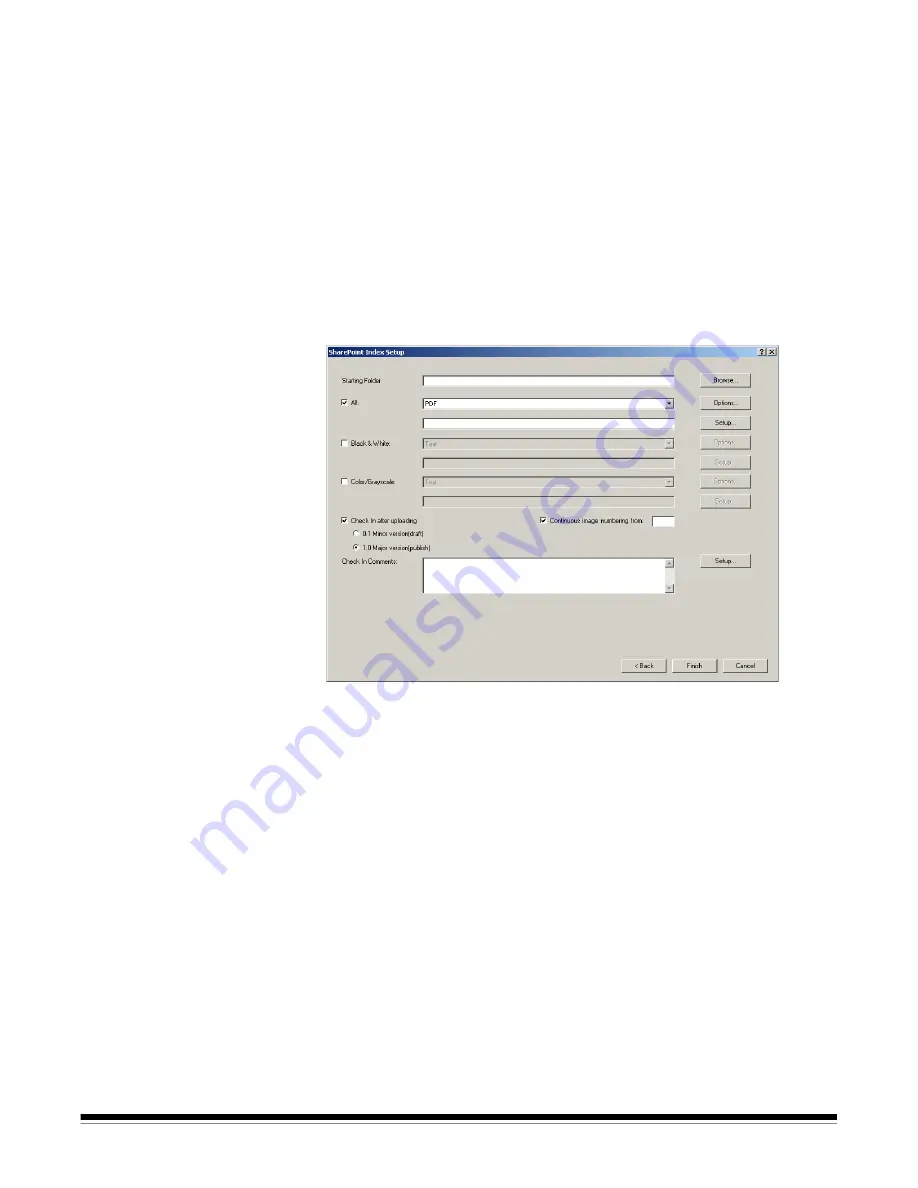
A-61635 December 2010
4-43
TIP:
The
SharePoint Name
column will define the name of the file stored in
SharePoint. In Step 4 you will decide how to group images.
If you group by
Multi-Page
for each ‘Document’, then each document must
have a unique name. For example ‘Name’ may be
<DOCUMENT_SEQUENCENUMBER>.
If you group by
Single page
, each image must have a unique name which
means the
Name
column must contain a value that will be unique for each
image. For example ‘Name’ may be
<IMAGE_SEQUENCENUMBER_DOCUMENT>.
Step 4. SharePoint setup: Defining storage options and paths
The last step is to specify the format of the images and where you want to
store the images in SharePoint.
The ‘Starting Folder” is the path to an existing folder in the current SharePoint
site. The image paths you specify for ‘All’, ‘Black & White’ and ‘Color/
Grayscale’ will start at this folder. You may select
Setup
to view the available
folders.
If you have Black & White and Color / Grayscale images and all the images are
to be stored at the same location using the same image format then select the
All
checkbox.
Select the file type (Text, TIFF, PDF, etc.) for your output. Select
Options
to
configure the file format for the file type you selected. For a description of the
file format dialog boxes see the section entitled “Setup options for File (1) and
File (2)” in Job Setup: Output Tab.
You may specify folder location for the image in the box below the file type.
Select
Setup
to build the folder location from available system and field index
values.
TIP:
The Setup buttons allow you to specify the path and folder name in which
to store images (SharePoint documents). Each ‘document’ must have a
unique path and name or the document may be overwritten. If versioning is
configured, a duplicate filename error may result. Verify that SharePoint
‘Name’ you choose in Step 3 is compatible with the path and image grouping
selection you have made.






























